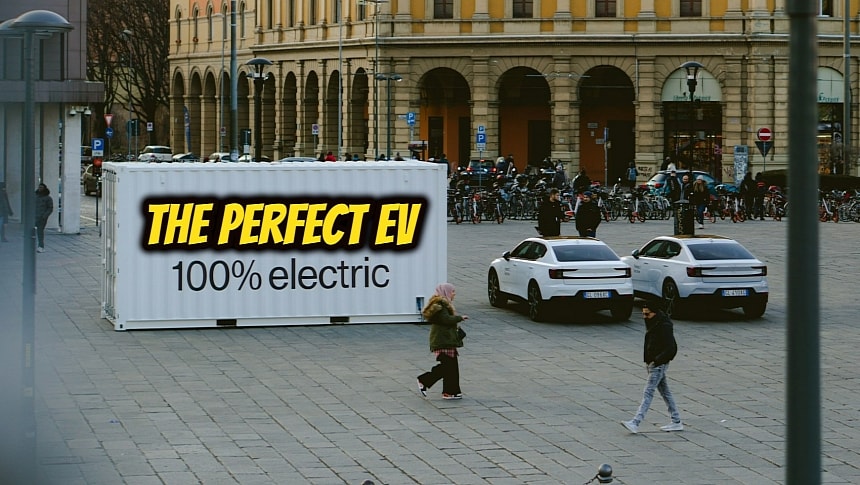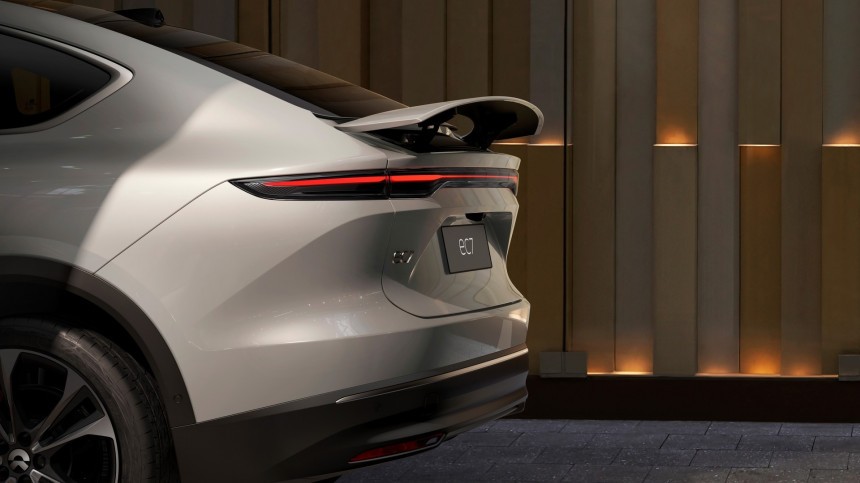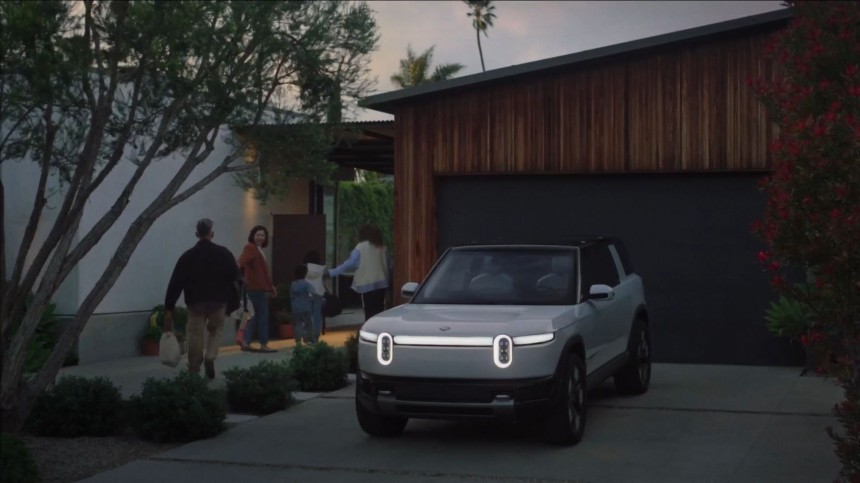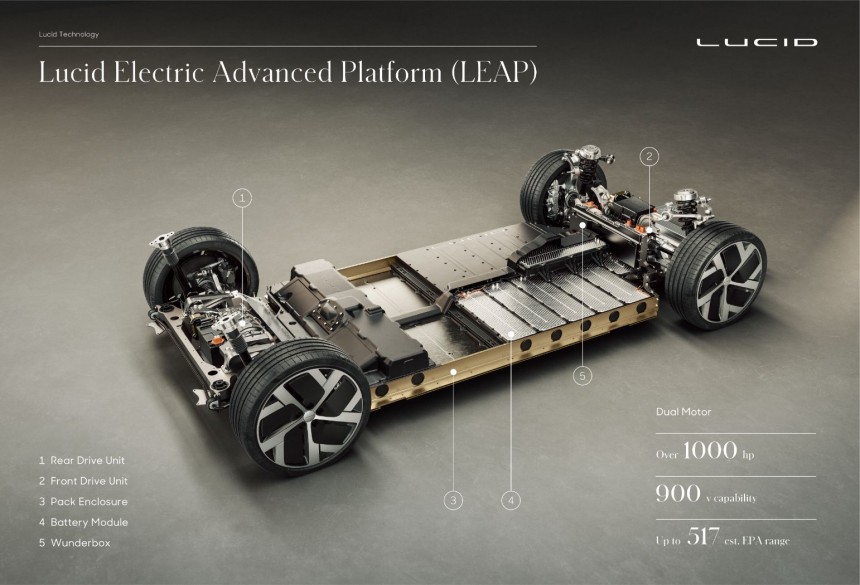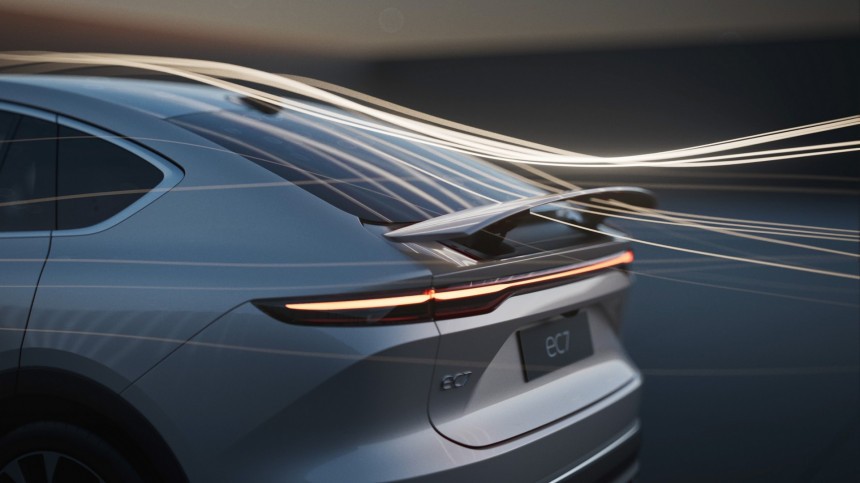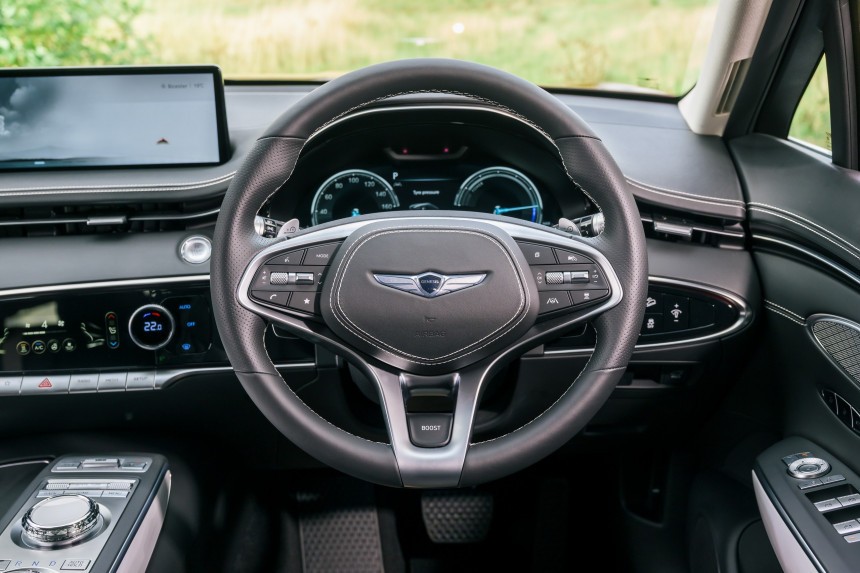Ever since electric vehicle (EV) sales picked up some steam and these "zero-emission" rides gained a bit of notoriety globally (don't forget that the Model Y was 2023's world's best-selling car), detractors keep coming up with all sorts of excuses to avoid them. Well, today, we're envisioning the PERFECT electric vehicle. If you still don't want to buy this, then chances are you just want to keep paying for gas.
First things first, we need to address the elephant in the room – charging. As I have previously stated, an EV is a great option if you can replenish your ride's high-voltage energy storage unit at home, at work, or somewhere else (ideally for free). If you depend on the public high-power charging infrastructure, things aren't going to look good for the budget-conscious people out there.
In many parts of the US and other countries, filling up with gas is cheaper (and admittedly more convenient) than waiting for electrons to be dispensed at a rapid pace. Fast charging might become more affordable in the future, though. As the grid matures and more renewable energy sources are brought online, we might end up enjoying much cheaper electricity. Those who have already invested in solar panels for their homes can attest to the wonder of clean electricity.
Of course, software will also evolve. Dynamic pricing and balancing the output and consumption will become much easier. That will enable companies to secure their much-needed profits, and consumers (who might also be EV owners) will enjoy much lower bills. Some Americans and Europeans are already taking advantage of such a system and are getting paid to charge their EVs at night.
But not everyone lives in a house with solar panels on top of it or in a place where dynamic pricing is a thing.
So, let's build the ideal EV that can be ideal for nearly everybody, everywhere.
Besides that, the MSRPs are also acceptable. The marque sells a $90,000 sedan that can allegedly go from zero to 60 mph (97 kph) in 1.99 seconds and keep accelerating until it reaches a top speed of 162 mph (261 kph) or 200 mph (322 kph) if you paid for the "Track Pack" hardware upgrades. Too bad insurance and out-of-warranty repairs can become quite a financial burden.
Now, even though Tesla sells the very successful Model Y, the Texas-based brand's cars aren't a good fit for everyone. So, we need to look around and make one ourselves.
The first thing we need is a chassis. Although there are many good options out there, our choice is Rivian's skateboard platform. The only thing we're taking out is the very good but potentially expensive to-fix McLaren 720S-inspired air compressors.
Essentially, we're left with the R2 steel springs setup with adaptive dampers. It may not be as comfy or as useful as the air suspension (bye-bye self-leveling), but it will surely be more dependable and much cheaper to fix.
Rivian's shorter skateboard platform is also a good choice because today's new car buyers prefer having a high driving position, more cabin room, and improved ground clearance. Ford didn't give up on sedans and hatchbacks because it was throwing a fit. It responded to a market trend. It kept the iconic Mustang, though!
Now, we need a drivetrain. The obvious choice would have been Tesla's motor and battery… That is, of course, if Lucid wasn't around. The Saudi-backed, Newark-based marque led by former Tesla Model S Chief Engineer Peter Rawlinson has an incredible motor and battery combo. Even Aston Martin liked it! So, we're going to borrow the Lucid Air Grand Touring drivetrain. That gives our project around 820 hp and a range of up to 516 miles (830 kilometers).
Despite what some people may say, a bigger range is always welcomed. The high-voltage energy storage unit's performance is impacted when it's too hot or too cold. That may result in a diminished range, which can sometimes be even half of what would normally be available. The more you have, the more you can comfortably do without.
Moreover, many Americans travel long distances at high speeds. The Air Grand Touring can comfortably cover over 430 miles (692 kilometers) at an average speed of 70 mph (113 kph). The 112-kWh battery and the two motors are perfect. A slower and more affordable single-motor version with more range also makes sense. So, we have some wiggle room here.
Now, we need a body shape. Land Rover's Range Rover Velar immediately comes to mind. It embodies a luxurious appearance while keeping a hint of ruggedness to it. The vehicle inspires you to confidently visit the poshest establishment in your area while also going for a worry-free countryside drive afterward. Sadly, it has a drag coefficient (Cd) of 0.32.
The Mercedes-Benz EQE SUV, with its Cd of 0.25, is much better in this regard. That's what we want – a car that won't be too impacted by air resistance. However, that bulbous exterior look isn't very appealing. We must look elsewhere.
So, where should we head our attention if there's nothing good for us in the US or Europe? Well, the answer is Asia. More specifically, China's Nio has what we want. The EC7 measures 195.6 inches (4,968 millimeters) in length. That's under 10 inches longer than something like the Mazda CX-50. We could shrink this body to fit our chosen underpinnings.
The best thing about the EC7 is that it has a Cd of 0.23. That's great for our project. Besides that, it has a sloped roofline and an athletic appearance. It's what we need.
The obvious choice for a great interior design is to just take the non-facelifted BMW X5's cabin, shrink it a bit, and install it on our EV. The problem is that it has a transmission tunnel that is not needed on an EV. Moreover, it's not very versatile for those sitting in the front. There's no extra storage in the center console like you would find on a Cadillac Lyriq or a Mercedes-Benz EQS SUV.
The issue is that many automakers have been cutting corners with their interiors to save money. BMW, fortunately, has not. Its pricier vehicles have great materials throughout the cabin, even in spaces where you don't expect to find soft plastic or padded surfaces.
But we found a solution – Genesis. With little to no hump in the floor, a Bentley-esque approach to the seat design, an elegant blend of buttons, touchscreens, and high-quality non-capacitive displays, quality materials throughout the cabin, great connectivity, and impressive storage, the South Korean brand's Electrified GV70 is what we'll use for our project.
So, here we are: the ideal EV is a combination of Rivian, Lucid, NIO, and Genesis tidbits. Will somebody build it? We might see some great small SUVs down the road. However, it's unlikely that one brand will bring forward a car that's not only premium but also meant for most new car buyers. The Model Y succeeded because it was a smart compromise. Not many non-Chinese automakers can pull a similar business move.
Let's not lose our hope, though. In a couple of years, EVs might improve dramatically in every aspect. We may never think about filling up a car with gas again.
In many parts of the US and other countries, filling up with gas is cheaper (and admittedly more convenient) than waiting for electrons to be dispensed at a rapid pace. Fast charging might become more affordable in the future, though. As the grid matures and more renewable energy sources are brought online, we might end up enjoying much cheaper electricity. Those who have already invested in solar panels for their homes can attest to the wonder of clean electricity.
Of course, software will also evolve. Dynamic pricing and balancing the output and consumption will become much easier. That will enable companies to secure their much-needed profits, and consumers (who might also be EV owners) will enjoy much lower bills. Some Americans and Europeans are already taking advantage of such a system and are getting paid to charge their EVs at night.
But not everyone lives in a house with solar panels on top of it or in a place where dynamic pricing is a thing.
Selecting the right bits
If this had been a discussion among early EV adopters, the answer would have been obvious: depending on your budget and mobility needs, you should buy a Tesla. The world's most valuable auto brand may not be known for manufacturing quality, excellent comfort, or repairability, but it does make energy-efficient EVs and operates America's largest high-power charging network. Commuting and road-tripping shouldn't be a hassle.Besides that, the MSRPs are also acceptable. The marque sells a $90,000 sedan that can allegedly go from zero to 60 mph (97 kph) in 1.99 seconds and keep accelerating until it reaches a top speed of 162 mph (261 kph) or 200 mph (322 kph) if you paid for the "Track Pack" hardware upgrades. Too bad insurance and out-of-warranty repairs can become quite a financial burden.
Now, even though Tesla sells the very successful Model Y, the Texas-based brand's cars aren't a good fit for everyone. So, we need to look around and make one ourselves.
The first thing we need is a chassis. Although there are many good options out there, our choice is Rivian's skateboard platform. The only thing we're taking out is the very good but potentially expensive to-fix McLaren 720S-inspired air compressors.
Rivian's shorter skateboard platform is also a good choice because today's new car buyers prefer having a high driving position, more cabin room, and improved ground clearance. Ford didn't give up on sedans and hatchbacks because it was throwing a fit. It responded to a market trend. It kept the iconic Mustang, though!
The people have spoken. We have to listen
So, what we're moving toward is a two-row crossover or small SUV. A midsize SUV like the BMW X5 or the Mercedes-Benz GLE doesn't make much sense because larger and heavier cars aren't helping with efficiency. A good EV needs to slip through the air and weigh as little as possible.Now, we need a drivetrain. The obvious choice would have been Tesla's motor and battery… That is, of course, if Lucid wasn't around. The Saudi-backed, Newark-based marque led by former Tesla Model S Chief Engineer Peter Rawlinson has an incredible motor and battery combo. Even Aston Martin liked it! So, we're going to borrow the Lucid Air Grand Touring drivetrain. That gives our project around 820 hp and a range of up to 516 miles (830 kilometers).
Moreover, many Americans travel long distances at high speeds. The Air Grand Touring can comfortably cover over 430 miles (692 kilometers) at an average speed of 70 mph (113 kph). The 112-kWh battery and the two motors are perfect. A slower and more affordable single-motor version with more range also makes sense. So, we have some wiggle room here.
Now, we need a body shape. Land Rover's Range Rover Velar immediately comes to mind. It embodies a luxurious appearance while keeping a hint of ruggedness to it. The vehicle inspires you to confidently visit the poshest establishment in your area while also going for a worry-free countryside drive afterward. Sadly, it has a drag coefficient (Cd) of 0.32.
The Mercedes-Benz EQE SUV, with its Cd of 0.25, is much better in this regard. That's what we want – a car that won't be too impacted by air resistance. However, that bulbous exterior look isn't very appealing. We must look elsewhere.
So, where should we head our attention if there's nothing good for us in the US or Europe? Well, the answer is Asia. More specifically, China's Nio has what we want. The EC7 measures 195.6 inches (4,968 millimeters) in length. That's under 10 inches longer than something like the Mazda CX-50. We could shrink this body to fit our chosen underpinnings.
The final touches
At this point, the only thing we still need is a cabin. The ideal EV needs to be spacious but not cluttered. It must have great tech but not all the gimmicks. The place where you're spending a lot of time must be nice. Great materials are a must. We don't want our ideal EV to be a testbed. We don't want our customers to feel like they're testing an unfinished product.The obvious choice for a great interior design is to just take the non-facelifted BMW X5's cabin, shrink it a bit, and install it on our EV. The problem is that it has a transmission tunnel that is not needed on an EV. Moreover, it's not very versatile for those sitting in the front. There's no extra storage in the center console like you would find on a Cadillac Lyriq or a Mercedes-Benz EQS SUV.
The issue is that many automakers have been cutting corners with their interiors to save money. BMW, fortunately, has not. Its pricier vehicles have great materials throughout the cabin, even in spaces where you don't expect to find soft plastic or padded surfaces.
So, here we are: the ideal EV is a combination of Rivian, Lucid, NIO, and Genesis tidbits. Will somebody build it? We might see some great small SUVs down the road. However, it's unlikely that one brand will bring forward a car that's not only premium but also meant for most new car buyers. The Model Y succeeded because it was a smart compromise. Not many non-Chinese automakers can pull a similar business move.
Let's not lose our hope, though. In a couple of years, EVs might improve dramatically in every aspect. We may never think about filling up a car with gas again.
